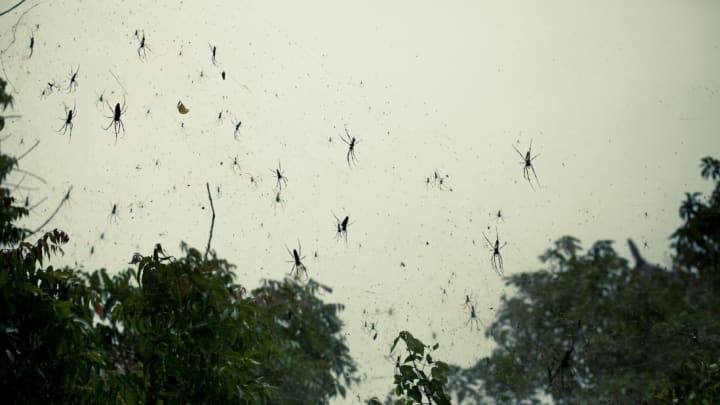If recent events are anything to go by, you should be less concerned about swallowing spiders in your sleep and more concerned about bird-eating spiders raining down on your head. As The Guardian reports, recent footage from the Brazilian countryside shows thousands of spiders seemingly suspended in mid-air. (Arachnophobes might want to give the video below a miss.)
In reality, they aren’t falling at all. The spiders, which likely belong to a South American species called Parawixia bistriata, are merely crawling on an ultra-fine and nearly invisible web that attaches to two objects, like trees or bushes, to form a canopy.
So why do they do it? To catch prey, naturally. They’re likely to snag a variety of insects and maybe even small birds in their communal web, which can stretch up to 13 feet wide. (And yes, they eat the birds, too.)
Brazilian biology professor Adalberto dos Santos tells The Guardian that P. bistriata are some of the rare “social” spiders that do this. They leave their webs up overnight, hide out in the nearby vegetation, and then return at dawn to feast.
While this natural phenomenon is certainly unsettling, it isn’t exactly rare. Residents of the southeast municipality of Espírito Santo do Dourado, where the video was shot, said these “spider rains” are common when the weather is hot and humid.
Here’s another video from Santo Antônio da Platina in southern Brazil in 2013.
Other species of spider have been known to jump into the wind and "surf" on strands of silk as a means of getting around. They do this to escape threats or get to food or mates in other locations, and cases of "spider flight" have been recorded all over the world. Some especially adventurous spiders have even been known to cross oceans by “ballooning” their way from one land mass to the next.
[h/t The Guardian]
